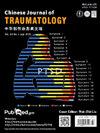YOLOX-SwinT 算法提高了创伤骨科医生对转子间骨折进行 AO/OTA 分类的准确性
IF 1.8
4区 医学
Q2 ORTHOPEDICS
引用次数: 0
摘要
本文章由计算机程序翻译,如有差异,请以英文原文为准。
YOLOX-SwinT algorithm improves the accuracy of AO/OTA classification of intertrochanteric fractures by orthopedic trauma surgeons
Purpose
Intertrochanteric fracture (ITF) classification is crucial for surgical decision-making. However, orthopedic trauma surgeons have shown lower accuracy in ITF classification than expected. The objective of this study was to utilize an artificial intelligence (AI) method to improve the accuracy of ITF classification.
Methods
We trained a network called YOLOX-SwinT, which is based on the You Only Look Once X (YOLOX) object detection network with Swin Transformer (SwinT) as the backbone architecture, using 762 radiographic ITF examinations as the training set. Subsequently, we recruited 5 senior orthopedic trauma surgeons (SOTS) and 5 junior orthopedic trauma surgeons (JOTS) to classify the 85 original images in the test set, as well as the images with the prediction results of the network model in sequence. Statistical analysis was performed using the SPSS 20.0 (IBM Corp., Armonk, NY, USA) to compare the differences among the SOTS, JOTS, SOTS + AI, JOTS + AI, SOTS + JOTS, and SOTS + JOTS + AI groups. All images were classified according to the AO/OTA 2018 classification system by 2 experienced trauma surgeons and verified by another expert in this field. Based on the actual clinical needs, after discussion, we integrated 8 subgroups into 5 new subgroups, and the dataset was divided into training, validation, and test sets by the ratio of 8:1:1.
Results
The mean average precision at the intersection over union (IoU) of 0.5 (mAP50) for subgroup detection reached 90.29%. The classification accuracy values of SOTS, JOTS, SOTS + AI, and JOTS + AI groups were 56.24% ± 4.02%, 35.29% ± 18.07%, 79.53% ± 7.14%, and 71.53% ± 5.22%, respectively. The paired t-test results showed that the difference between the SOTS and SOTS + AI groups was statistically significant, as well as the difference between the JOTS and JOTS + AI groups, and the SOTS + JOTS and SOTS + JOTS + AI groups. Moreover, the difference between the SOTS + JOTS and SOTS + JOTS + AI groups in each subgroup was statistically significant, with all p < 0.05. The independent samples t-test results showed that the difference between the SOTS and JOTS groups was statistically significant, while the difference between the SOTS + AI and JOTS + AI groups was not statistically significant. With the assistance of AI, the subgroup classification accuracy of both SOTS and JOTS was significantly improved, and JOTS achieved the same level as SOTS.
Conclusion
In conclusion, the YOLOX-SwinT network algorithm enhances the accuracy of AO/OTA subgroups classification of ITF by orthopedic trauma surgeons.
求助全文
通过发布文献求助,成功后即可免费获取论文全文。
去求助
来源期刊

Chinese Journal of Traumatology
ORTHOPEDICS-
CiteScore
3.80
自引率
4.80%
发文量
1707
审稿时长
28 weeks
期刊介绍:
Chinese Journal of Traumatology (CJT, ISSN 1008-1275) was launched in 1998 and is a peer-reviewed English journal authorized by Chinese Association of Trauma, Chinese Medical Association. It is multidisciplinary and designed to provide the most current and relevant information for both the clinical and basic research in the field of traumatic medicine. CJT primarily publishes expert forums, original papers, case reports and so on. Topics cover trauma system and management, surgical procedures, acute care, rehabilitation, post-traumatic complications, translational medicine, traffic medicine and other related areas. The journal especially emphasizes clinical application, technique, surgical video, guideline, recommendations for more effective surgical approaches.
 求助内容:
求助内容: 应助结果提醒方式:
应助结果提醒方式:


